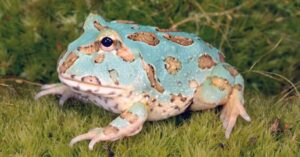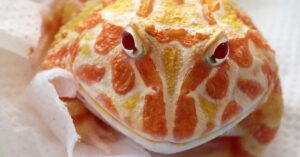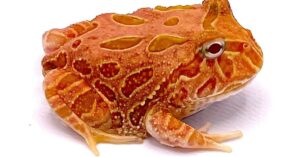🐸 Pacman Frog Digestive System Explained
From Feeding to Pooping: A Full Guide to Amphibian Digestion
Pacman Frog Digestive System - At a Glance
The Pacman frog digestive system starts with a strong jaw and ends with nutrient absorption and waste expulsion. Designed for a carnivorous, ambush lifestyle, their system is fast but sensitive to improper prey size, hydration, and temperature. Understanding it helps prevent impaction and digestive illness.
Pacman frogs (Ceratophrys spp.) may look like little green blobs, but inside, they have a powerful digestive system adapted for swallowing large, whole prey. Their digestive process is simple but highly dependent on environmental conditions such as heat and hydration.
In this article, you’ll learn:
How Pacman frog digestion works from start to finish
Key organs involved in digestion
How temperature and humidity affect digestion
Signs of digestive trouble and how to prevent it
The link between digestion and feeding routines
Step 1: Ingestion – The Big Bite
Pacman frogs don’t chew—they swallow prey whole using a rapid lunge, sticky tongue, and strong jaw muscles.
Key Traits:
Ambush predators: wait motionless until prey comes close
Strong bite force: helps subdue larger or moving prey
No true teeth, but they have bony ridges to grip food
👉 Pacman Frog Feeding Tongs: Tips for Safe Feeding
👉 What Do Pacman Frogs Eat? Complete Feeding Guide
Step 2: Stomach Digestion
Once swallowed, the prey enters the stomach, where digestion truly begins.
| Function | Detail |
|---|---|
| Gastric acid secretion | Breaks down soft tissues and bone |
| Enzymes | Aid in protein and fat digestion |
| Duration | Can take 1–3 days depending on meal size/temp |
Digestion is temperature-dependent. If your frog’s habitat is too cold, food will rot before it digests.
👉 Pacman Frog Temperature and Humidity Requirements
Step 3: Small Intestine – Nutrient Absorption
Food then passes to the small intestine, where most nutrient absorption occurs.
Liver and pancreas secrete bile and enzymes
Nutrients are absorbed into the bloodstream
The frog gains energy and stores fat for later use
Fun fact: Pacman frogs store fat in fat bodies near the kidneys, used during fasting periods.
Step 4: Large Intestine and Waste Expulsion
After absorption, waste moves to the large intestine and eventually exits via the cloaca—a shared exit for waste and reproduction.
| Output Type | Description |
|---|---|
| Solid feces | Dark, dense, often with insect parts |
| Urate | White waste from protein metabolism |
| Mucus | A little is normal; excess may indicate stress or parasites |
The Full Digestive Timeline
| Action | Time Range |
|---|---|
| Small insect meal | 24–48 hours |
| Large prey item | 2–5 days |
| Cold environment | Up to a week (risk of impaction!) |
Pacman frogs don’t poop daily. In fact, once every 4–7 days is typical for healthy adults.
Environmental Factors That Affect Digestion
| Factor | Effect on Digestion |
|---|---|
| Temperature | Low temps slow digestion; ideal is 75–85°F |
| Hydration | Dehydration leads to constipation/impaction |
| Humidity | Keeps skin moist and aids hydration |
| Substrate | Ingesting loose substrate can cause blockage |
Common Digestive Problems
1. Impaction
Cause: Swallowing substrate or oversized prey
Symptoms: Lethargy, bloating, no poop for 7+ days
Prevention: Use feeding tongs, proper substrate, appropriate prey size
2. Regurgitation
Cause: Cold temps or stress
Symptoms: Spitting up whole food shortly after eating
Prevention: Maintain stable temperature and feeding environment
3. Parasites
Cause: Wild prey or contaminated enclosures
Symptoms: Runny stool, weight loss, refusal to eat
Prevention: Use clean, captive-bred prey and clean enclosure regularly
Final Thoughts
The Pacman frog digestive system is simple but sensitive. It’s built for high-protein, whole-prey meals, but depends entirely on warmth, hydration, and timing. When you understand how digestion works, you can feed confidently, spot health issues early, and provide top-tier care.
FAQ: Pacman Frog Digestion
Q: How do I know if my frog has digested its food?
A: You’ll usually see a poop within a few days. A healthy frog will stay alert and round.
Q: Should I feed if my frog hasn’t pooped yet?
A: Wait. Feeding before digestion is complete can lead to overfeeding or impaction.
Q: Can Pacman frogs throw up?
A: Yes, but it’s rare. Regurgitation often indicates stress or improper temps.




